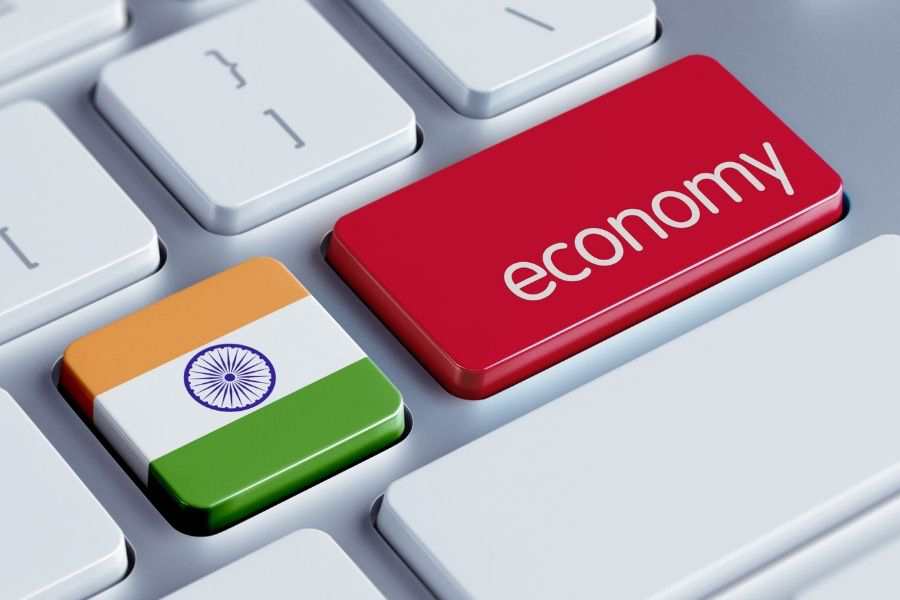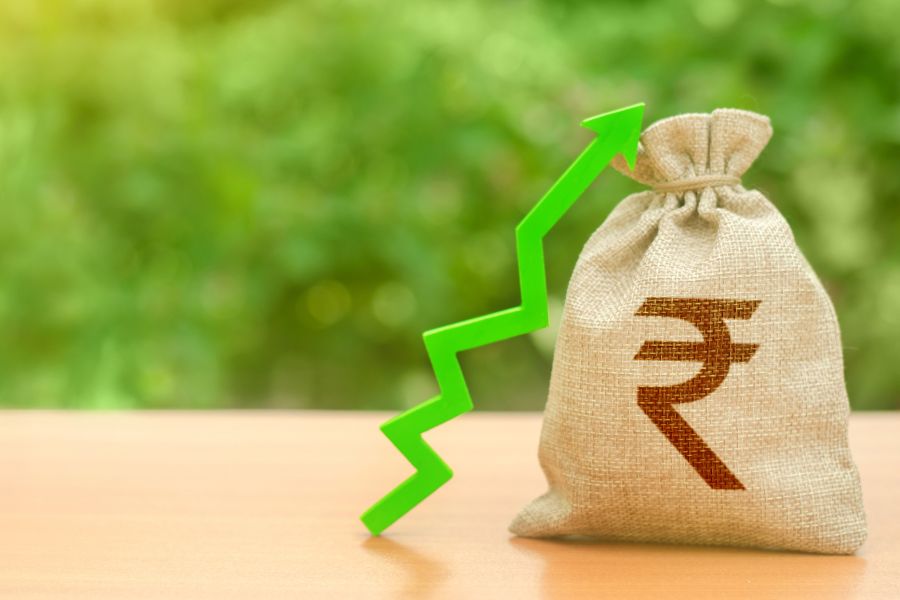Logistics in India: From barrier to catalyst
• India’s logistics costs account for around 14% of GDP compared to 8-9% in US and Europe.
• High logistics costs are unfavorable to India’s export competitiveness in the global market.
• Growing consumer demand and the rise of e-commerce is fuelling a surge in the logistics sector in India.
• Transforming India’s logistics sector will depend on fast-paced development of quality infrastructure as well as capability of service providers to adapt themselves to changing paradigms.

With the rise of globalisation, the synergy of international trade and transport logistics has already become general direction and central theme of development for the global economy. Also, the expansion of the logistics industry has fetched support and attention, not only because it is a kind of progressive management technique or a good business practice on its own, but also since it has gradually become a vital index to estimate competitiveness and level of modernisation of a nation at the macro level.
Although, the contribution of logistics to the national output in a country may not be as high as other sectors, the role that logistics plays in catalysing economic activity cannot be undermined. One well-known connection between transport and logistics and national development is the facilitation of international trade, which, under appropriate circumstances, delivers several other beneficial economic and social outcomes.
The Department of Commerce, Government of India was allocated the responsibility of “Integrated development of Logistics sector” and a separate logistics division was created within the Department in 2017. Currently, Indian goods are less competitive in the world market as logistics costs of exports are very high in the country. India’s logistics costs account for around 14% of GDP as compared to 8-9% for US or Europe, according to McKinsey Research. That is a major reason why India’s share in world trade remains relatively low at around 1.7% for exports and 2.6% for imports in 2018.
On the Logistics Performance Index rankings in 2018, India still stands at a low rank of 44. As a signatory to the Trade Facilitation Agreement (TFA) at WTO, India seeks to expedite the movement, release and clearance of goods across borders, launch a new phase for trade facilitation reforms all over the world and create a significant boost for commerce and the multilateral trading system as a whole.
India’s Logistics Performance Index Outlook
| Country | India |
| Year | 2018 |
| LPI rank | 44 |
| LPI score | 3.18 |
| Customs rank | 40 |
| Customs score | 2.96 |
| Infrastructure rank | 52 |
| Infrastructure score | 2.91 |
| International shipments rank | 44 |
| International shipments score | 3.21 |
| Logistics competence rank | 42 |
| Logistics competence score | 3.13 |
| Tracking & tracing rank | 38 |
| Tracking & tracing score | 3.32 |
| Timeliness rank | 52 |
| Timeliness score | 3.5 |
Source: World Bank
The governance of logistics can act as a positive catalyst for improved trade. Public policies relating to trade logistics are crucial as the efficiency of logistics depends on well-designed government policies. Effective trade logistics is also related to institutional aspects of logistics such as government regulations, firm-level administrative & operational procedures, supply chains and national trade procedures for inward and outward movement of goods. The rapid expansion in international trade volumes as noticed over the last two decades also demands streamlining of cumbersome, costly and time-consuming trade procedures at the level of bureaucracy. These can create an environment for corruption to arise, which can create further inefficiencies.
Global Logistics Performance Index Outlook
| Country | Germany (best performer) | Region: Europe & Central Asia | Region: East Asia & Pacific | Region: Middle East & North Africa | Region: Latin America & Caribbean | Region: South Asia | Region: Sub-Saharan Africa |
| Year | 2018 | 2018 | 2018 | 2018 | 2018 | 2018 | 2018 |
| LPI rank | 1 | ||||||
| LPI score | 4.2 | 3.24 | 3.15 | 2.78 | 2.66 | 2.51 | 2.45 |
| Customs rank | 1 | ||||||
| Customs score | 4.09 | 3.04 | 3.01 | 2.54 | 2.47 | 2.32 | 2.27 |
| Infrastructure rank | 1 | ||||||
| Infrastructure score | 4.37 | 3.13 | 3.05 | 2.76 | 2.47 | 2.33 | 2.2 |
| International shipments rank | 4 | ||||||
| International shipments score | 3.86 | 3.14 | 3.03 | 2.73 | 2.69 | 2.48 | 2.52 |
| Logistics competence rank | 1 | ||||||
| Logistics competence score | 4.31 | 3.21 | 3.13 | 2.68 | 2.59 | 2.45 | 2.39 |
| Tracking & tracing rank | 2 | ||||||
| Tracking & tracing score | 4.24 | 3.27 | 3.18 | 2.79 | 2.68 | 2.56 | 2.5 |
| Timeliness rank | 3 | ||||||
| Timeliness score | 4.39 | 3.65 | 3.49 | 3.19 | 3.05 | 2.9 | 2.77 |
Source: World Bank
Future of logistics in India
The logistics industry in India is evolving rapidly and the interplay of infrastructure, technology and new types of service providers will define whether the industry will be able to help its customers reduce their logistics costs and provide effective services. Changing government policies on taxation and regulation of service providers will play an important role in this process. Coordination across various government agencies requires approval from multiple ministries and is a roadblock for multi-modal transport in India.
Logistics performance has recently received attention in the context of benchmarking initiatives globally to assess the ease of doing business in different countries. Inefficiency of logistics and transportation services is increasingly being seen as a major contributor to high import costs and long delays. At the firm level, the logistics focus is moving towards reducing cycle times to add value to their customers. Consequently, better tools and strategies are sought by firms to enhance their decision-making.
Logistics performance is positively impacted by the management strategy of the supply chain and has a direct impact on marketing performance, which in turn influences financial performance of manufacturing firms. An effective transport system can be achieved through an efficient use of transport modes, terminals, warehouses and other resources. It also requires understanding and availability of options as well as freight support & logistics service selection decisions.
The biggest enhancement to the growth of the Indian logistics industry has been the burgeoning consumer demand, particularly in the Tier 2 and 3 regions of the country. India is also undergoing a significant retail boom with rising purchasing capacity of the middle and upper-middle segments of the population. This is being further fuelled by the ground-breaking growth being seen in e-commerce. It is leading to new innovations in services, since logistics is the most critical ingredient in the success of an online business. Several MNCs from a wide range of industries have shown growing interest in setting up world-class manufacturing facilities in India to cater both domestic as well as export markets.
However, with infrastructure largely under-developed and incapable of catering to a growing economy, logistics management in India becomes quite convoluted. The dismal condition of infrastructure directly translates to higher turnovers, pushing up operating costs and reducing efficiency. Complex regulatory compliances and limited adoption and utilization of technology have resulted in increased documentation and inability to communicate effectively with customers.
The future of the logistics sector depends not only on the continued development of requisite support systems but also on the capability of the service providers to adapt themselves and make optimal utilisation of technologies. Moreover, there needs to be better coordination in infrastructure planning and simplification of tax regimes across regions.













Leave a comment